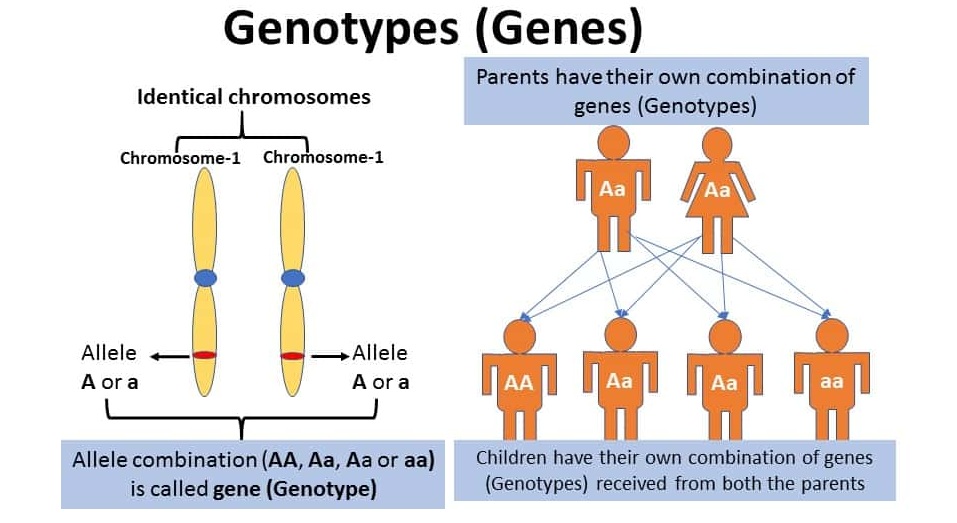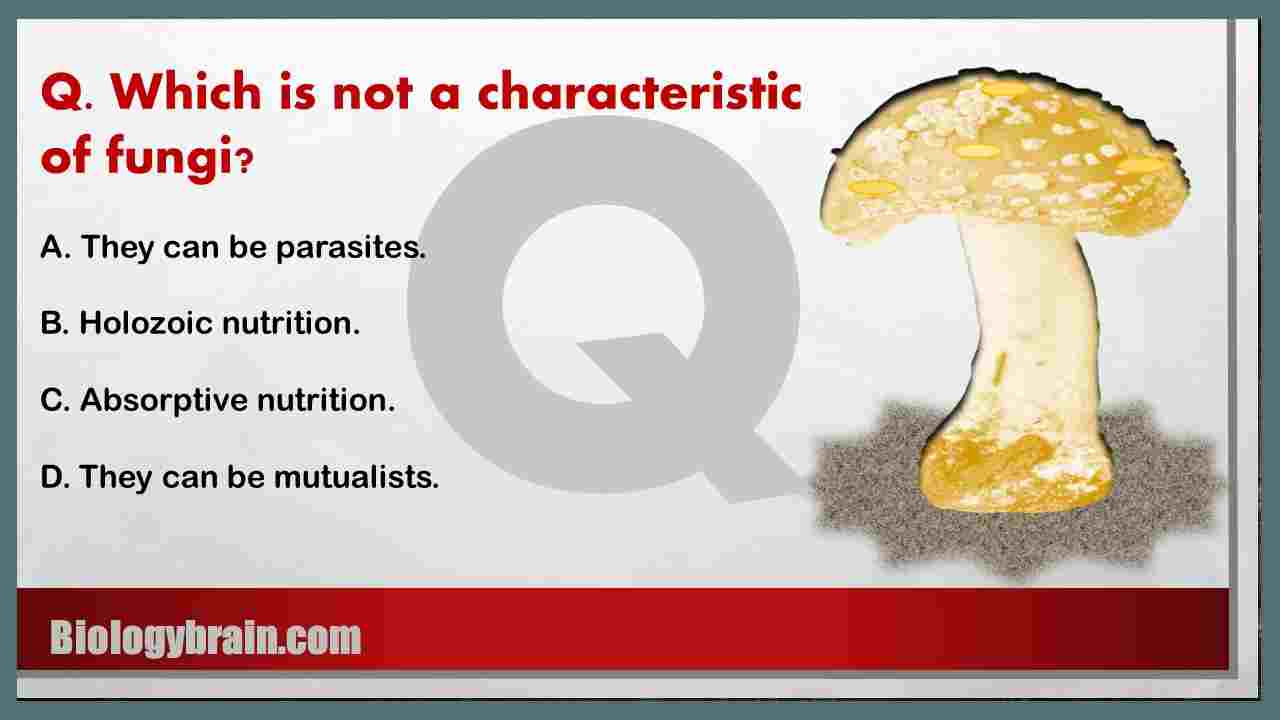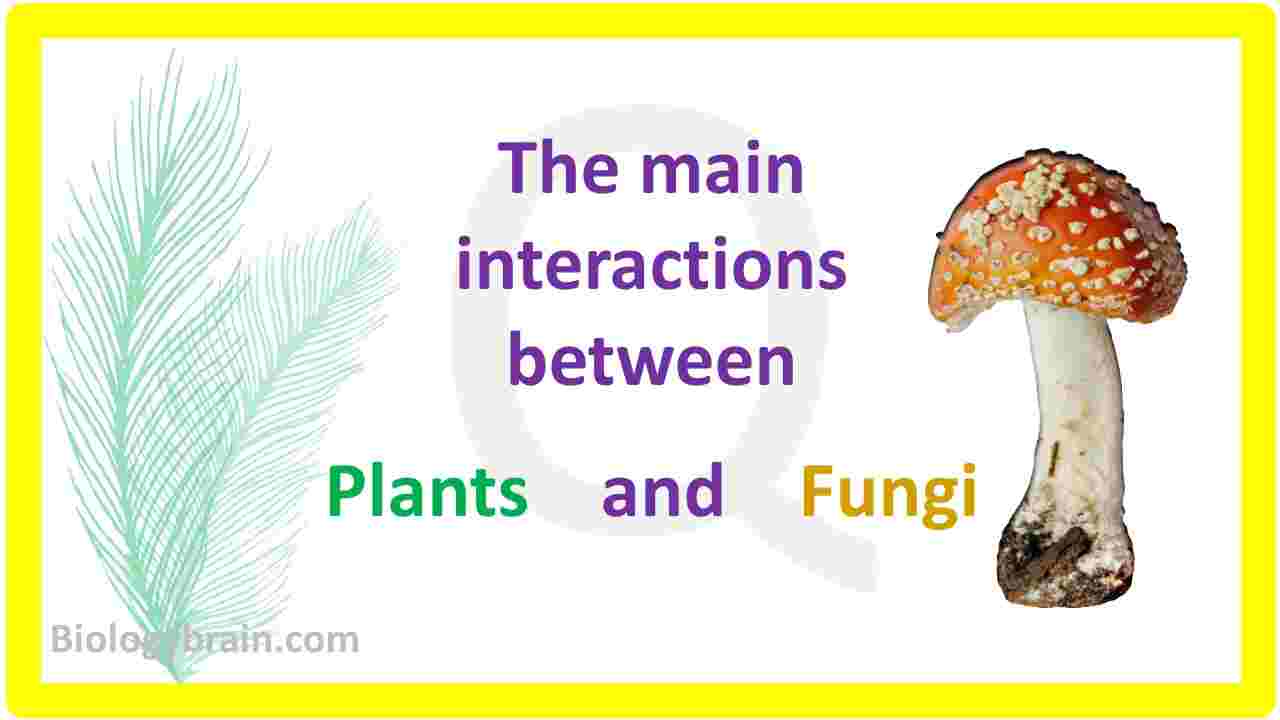Genotype Definition
A genotype is an inherent genetic property of living forms, that contains genes inherited from both the mother and father of the organism.
- The genotype determines the structural and functional attributes of the organism from embryo to adulthood.
- The emergence or establishment of any disease in developing or matured organisms is strictly dependent on the genotype (genes) of the organisms.
- The appearance and behavioral factors of an individual are called phenotypes, which include height, color, shape, mental ability, etc.
- The variations in these features among the living organisms are due to the presence of gene variability in their genotype.

Genotype characteristics
- Genotype is a genetic makeup or property of an organism.
- Scientifically, the genotype is an inherited material transmitted by gametes.
- Genotype determines the phenotype of an organism.
- Phenotype corresponds to observable characters of an organism.
- Genotype contains genes, which are differed from others.
- Alleles are alternative forms of a gene that can occupy the same locus on a specific chromosome and control the same characters of an organism.
- Homozygote is an individual in which both alleles at a given locus are identical.
- A heterozygote is an individual containing different alleles at one or more loci regarding a specific character.
- Every gene of the organism contains two alleles, each allele can code for a particular protein.
- If two alleles (AA or aa) of the genotype encode the same type of protein and that shows the same type of character, then that genotype is either homozygous dominant (AA) or homozygous recessive (aa).
- If two alleles (Aa or aA) of the gene encode different types of proteins, these show different effects on the same type of character, then that is heterozygous dominant. However, the recessive allele will only be expressed when it is in a homozygous pair (bb).
- Genetic and molecular studies can determine the variation of genetic material by DNA sequencing.
- DNA sequencing studies can distinguish an individual organism from other organisms of the same family.
- Nowadays, these DNA fingerprint studies are very crucial in forensic studies to determine the particular individual from suspected people.
- Scientific studies have taken many years (1988-2004) to complete a single human genome at a cost of millions of dollars.
Genotype Important Notes
- The mathematical analysis concluded that sexual reproduction will produce a unique genotype-containing organism, which is completely different from other organisms of the same family (except for individual twins, who are generated from the same fertilized egg).
- Generally, genotype differs slightly from other genomic sequences because it refers to how an organism differs or is specialized within a group of organisms or a group of species.
- So, typically, one refers to an organism’s genotype concerning a particular gene of interest and the combination of alleles the organism carries.
- Genotypes are often represented with letters, e.g., A and a; where A stands for one allele (Dominant) and a for another allele (recessive). Based on the combination of these alleles, the genotype has been divided into two types, homozygous (AA or aa), and heterozygous (Aa or Aa).
- Historically, the subject, Genetics referred to the study of heredity, the process in which a parent passes certain genes onto their offspring.
- The phenotype or appearance of the person (height, hair color, skin color, and eye color) is determined by genes (genotypes).
- Additional characteristics or phenotypes include metabolism, mental abilities, natural talents, and susceptibility or resistance to certain diseases or disorders that are affected by heredity or spontaneous genetic mutations.
Conclusion: A genotype is defined as the complete genetic information of the living forms that can either be prokaryotes or eukaryotes. Genotype encodes specific characteristic features of the organism ranging from structural development to functional attributes. The natural progression or occurrence of any disease over time is a result of inherited or genetic susceptibility (genetic inheritance).
Data source
- The genetic constitution of the individual, comprising the ALLELES present at each GENETIC LOCUS.
- C. Slavkin From Phenotype to Genotype. J Dent Res. 3S–6S. doi: [10.1177/0022034514533569]
- Virginie Orgogozo, Baptiste Morizot, and Arnaud Martin. The differential view of genotype-phenotype relationships.Front Genet.
- Mihaela Pavlicev, Elizabeth A. Norgard, Gloria L. Fawcett, and James M. Cheverud2Evolution of pleiotropy: Epistatic interaction pattern supports a mechanistic model underlying variation in genotype-phenotype map. J Exp Zool B Mol Dev Evol. doi: [10.1002/Jez.b.21410].










